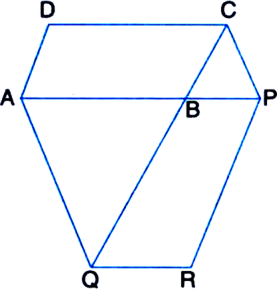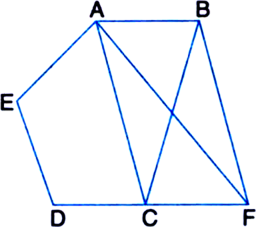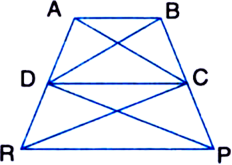 Long Answer Type
Long Answer Type
 Short Answer Type
Short Answer TypeIn figure, ABCDE is a pentagon. A line through B parallel to AC meets DC produced at F. Show that
(i) ar(ΔACB) = ar(ΔACF)
(ii) ar(□AEDF) = ar(ABCDE). 
Let ABCD be the plot of land of the shape of a quadrilateral. Let the portion ADE be taken over by the Gram Panchayat of the village from one comer D to construct a Health Centre.
Join AC. Draw a line through D parallel to AC to meet BC produced in P. Then Itwaari must be given the land ECP adjoining his plot so as to form a triangular plot ABP as then
ar(ΔADE) = ar(ΔPEC).
Proof: ∵ ΔDAP and ΔDCP are on the same base DP and between the same parallels DP and AC.
∴ ar(ΔDAP) = ar(ΔDCP)
Two triangles on the same base (or equal bases) and between the same parallels are equal in area
⇒ ar(ΔDAP) – ar(ΔDEP)
= ar(ΔDCP) – ar(ΔDEP)
| Subtracting the same areas from both sides
⇒ ar(ΔADE) = ar(ΔPCE)
⇒ ar(ΔDAE) + ar(□ABCE)
= ar(ΔPCE) + ar(□ABCE)
| Adding the same areas to both sides
⇒ ar(□ABCD) = ar(ΔABP).

Show that the area of a rhombus is half the product of the lengths of its diagonals.
Or
Prove that the area of a rhombus is equal to half the rectangle contained by its diagonals.
